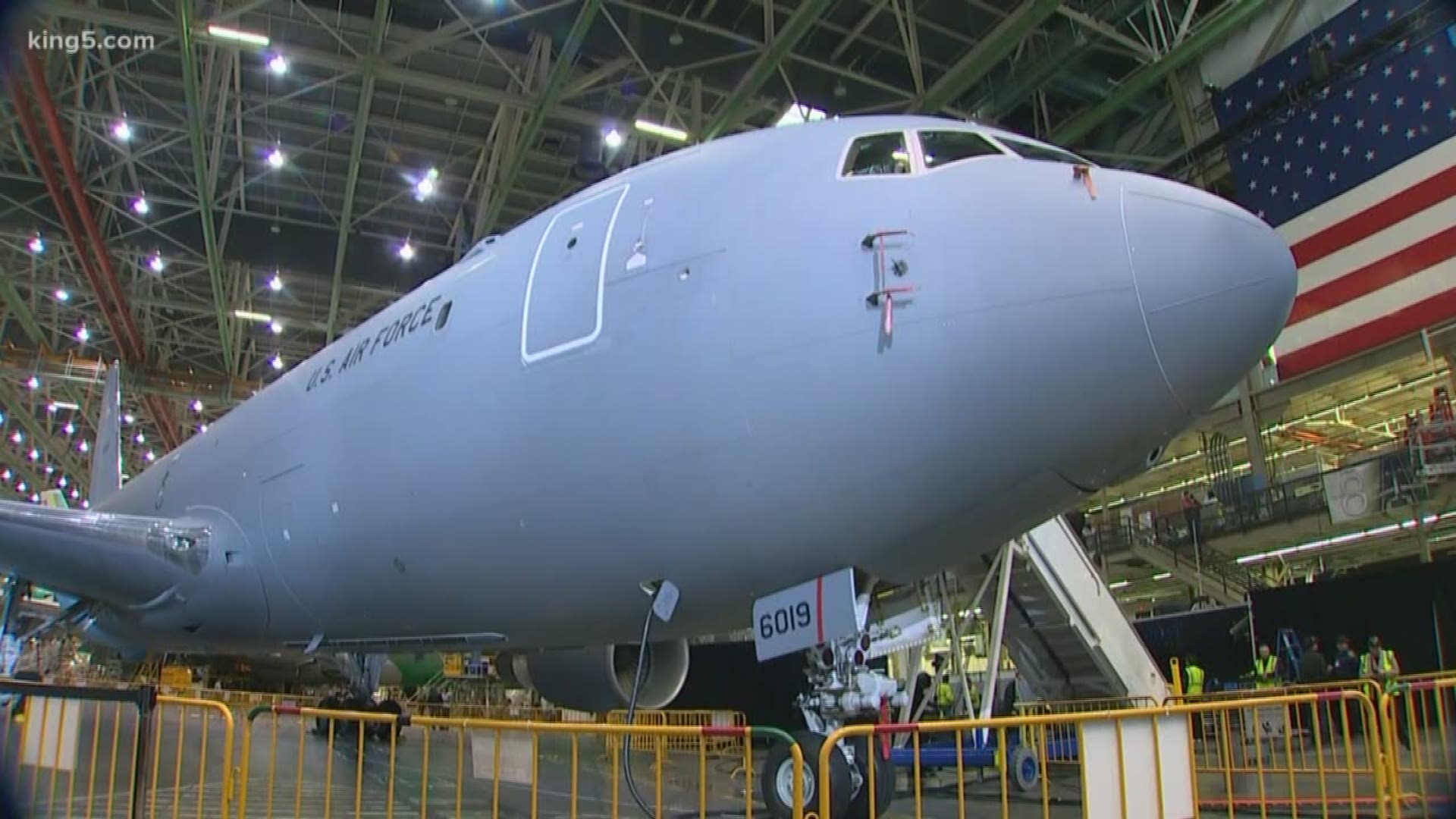EVERETT, Washington — It's been a long time coming, but Boeing delivered the first Everett-built tanker to the U.S. Air Force. Overdue and over budget, the plane holds plenty of promise as the company is working to sell a lot more beyond the first order.
The KC-46A tanker that debuted Thursday is the first of 179 jets that will replace aging Air Force tankers dating back to the late 1950s.
The tanker contract was announced nearly eight years ago on February 24, 2011. At the time, it was considered one of the most coveted defense contracts ever: to build 179 tanker aircraft worth some $35 billion.
Based on the 767 airframe, the tanker is considered highly capable. It can fuel two planes at once from drogue chutes at the end of its wings. It has a high-tech refueling boom which can extend 63 feet.
In the old Boeing-built KC-135 Stratotankers, refueling crews would lay on their stomachs and peer through a window. In the new KC-46As, refueling crews sit in a chair behind the cockpit and look at screens equipped with stereo cameras providing depth perception.
The tanker can also refuel planes in complete darkness using an infrared light system where pilots receiving the fuel can maneuver themselves in with light guidance provided along the bottom of the plane. Right now, pilots have to remove their night vision goggles and allow their eyes to adjust before refueling, then allow their eyes to adjust back to night vision conditions once that refueling is finished.
The plane can also be configured to haul 18 pallets of cargo, 58 litters to carry wounded warriors, and seats for soldiers. There are extra fuel tanks that can be mounted below the main deck in the lower lobe of the plane's fuselage. Kevlar armor provides protection to pilots in the cockpit to survive fire while landing and taking off in hostile territory. It can protect its crew from chemical attack, and when using a special button mounted on the back of the nose gear, be started and in the air in less ten minutes. Boeing says in one test, the crew was airborne in seven minutes and 38 seconds. The list goes on.
But it has come at a price. The first plane was due for delivery back in 2017 and, until today, the schedule kept slipping. The company says it has also run nearly $4 billion over budget to develop. Those are costs the company cannot pass back to taxpayers as this is a fixed-price contract.
One reason for the cost escalation is trying to solve an issue with the plane's refueling cameras, where glare at certain low sun angles can obscure the refueler's ability to see a docking plane. Boeing continues to work on the problem.
But despite the delays and the cost, Boeing expects it will make money on the plane, knowing that the Air Force will eventually need nearly 400 refueling jets which help the country project power globally.
Then there are the allies. The company says Japan has already committed to two KC-46A jets and is one of several countries operating a smaller fleet of older KC-767 tankers.
Perhaps the most important part of Boeing's win nearly eight years ago was a strategic one. Airbus, along with an American defense partner, had won the tanker contract a few years earlier, a win that Boeing filed a successful protest to cancel, forcing another round of competition where Boeing came out on top. The turning of the tables prevented Airbus from making a major inroad into the lucrative American defense business.

